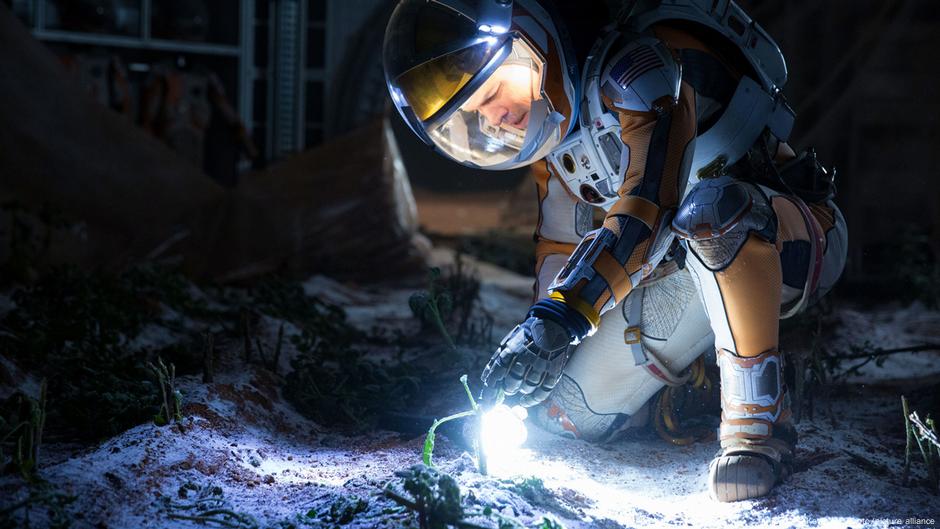Hollywood vs. Reality: When Science Takes Center Stage on Screen
Science
2025-04-15 08:44:15Content

Hollywood's silver screen often takes creative liberties with scientific accuracy, transforming complex scientific concepts into dramatic spectacles. But behind the scenes, a fascinating collaboration exists between scientific experts and filmmakers to inject authenticity into science fiction narratives.
Scientists have become increasingly involved in Hollywood productions, serving as technical consultants who bridge the gap between cinematic storytelling and scientific reality. Their role is crucial in helping filmmakers craft narratives that, while still entertaining, maintain a semblance of scientific plausibility.
From advising on spacecraft designs to ensuring realistic depictions of technological processes, these scientific consultants work diligently to ground fantastical storylines in real-world principles. Their expertise helps directors and screenwriters create more compelling and credible science fiction experiences that captivate audiences while respecting scientific fundamentals.
This collaborative approach not only enhances the visual and narrative quality of films but also serves an educational purpose, sparking public interest in scientific exploration and technological innovation through engaging storytelling.
Bridging Science and Cinema: How Experts Craft Authentic Narratives in Hollywood Blockbusters
In the dazzling world of Hollywood, where imagination knows no bounds, a fascinating collaboration emerges between scientific experts and filmmakers. This intricate dance of creativity and technical precision transforms seemingly fantastical narratives into compelling, scientifically grounded storytelling that captivates global audiences.Unveiling the Hidden Architects of Cinematic Realism: Where Science Meets Storytelling
The Scientific Consultancy Revolution in Film Production
Hollywood's landscape has dramatically transformed with the emergence of scientific consultants who serve as critical bridges between technical accuracy and narrative imagination. These experts, ranging from astrophysicists to biochemists, meticulously review scripts, provide technical guidance, and ensure that even the most extraordinary cinematic moments maintain a semblance of scientific plausibility. Modern filmmakers recognize that audiences today are increasingly scientifically literate and demand more than mere spectacle. They crave narratives that respect scientific principles while delivering breathtaking entertainment. Consultants work tirelessly behind the scenes, annotating scripts, suggesting realistic technological representations, and helping directors understand complex scientific concepts that can be translated into visually compelling sequences.Decoding the Collaborative Process: From Technical Manuscripts to Silver Screen
The consultation process is far more nuanced than simply fact-checking. Scientific advisors engage in deep collaborative discussions with screenwriters, directors, and production designers. They help conceptualize futuristic technologies, simulate realistic space travel dynamics, and ensure that biological or physical phenomena are portrayed with remarkable authenticity. For instance, when depicting quantum mechanics or interstellar travel, consultants provide intricate details that transform potentially absurd scenarios into scientifically informed narratives. They break down complex theoretical concepts, suggesting visual metaphors and narrative approaches that make advanced scientific ideas accessible to mainstream audiences.Case Studies of Scientific Authenticity in Cinema
Numerous blockbuster films stand as testament to this collaborative approach. Movies like "Interstellar," directed by Christopher Nolan, involved extensive consultations with theoretical physicist Kip Thorne, who helped design scientifically accurate representations of black holes and gravitational phenomena. Similarly, "The Martian" worked closely with NASA experts to ensure the technical accuracy of Mars exploration scenarios. These collaborations extend beyond mere technical accuracy. They represent a profound cultural exchange where scientific understanding is democratized through compelling storytelling. By making complex scientific concepts digestible and exciting, these films inspire public curiosity and potentially motivate future generations of scientists and researchers.Technological Evolution and Narrative Complexity
As computational graphics and simulation technologies advance, the potential for scientifically authentic storytelling expands exponentially. Machine learning algorithms, advanced rendering techniques, and interdisciplinary research collaborations are creating unprecedented opportunities for realistic scientific representations in cinema. Scientific consultants now employ sophisticated visualization tools, allowing filmmakers to create immersive experiences that are not just visually stunning but fundamentally rooted in scientific understanding. This approach transforms cinema from mere entertainment into a powerful educational and inspirational medium.Challenges and Future Perspectives
Despite significant progress, challenges remain in perfectly balancing scientific accuracy with narrative creativity. Filmmakers must often make artistic compromises to maintain audience engagement, while scientists strive to preserve technical integrity. The ongoing dialogue between scientific experts and creative professionals represents a dynamic ecosystem of knowledge exchange. As our understanding of complex scientific domains continues to evolve, so too will the methods by which we translate these insights into compelling visual narratives.RELATED NEWS
Science

Cosmic Close Call: Why Experts Breathe Easy About Newly Spotted Space Rock
2025-02-25 16:18:03
Science

STEM Showdown: Brighton High's Brilliant Minds Set to Clash at National Science Bowl Championship
2025-04-24 18:52:53
Science

Breaking: Chronic Back Pain Sufferers Vindicated by Groundbreaking Scientific Findings
2025-03-18 22:30:38





